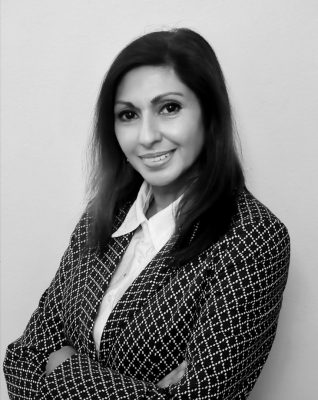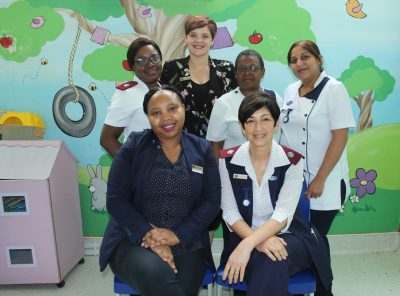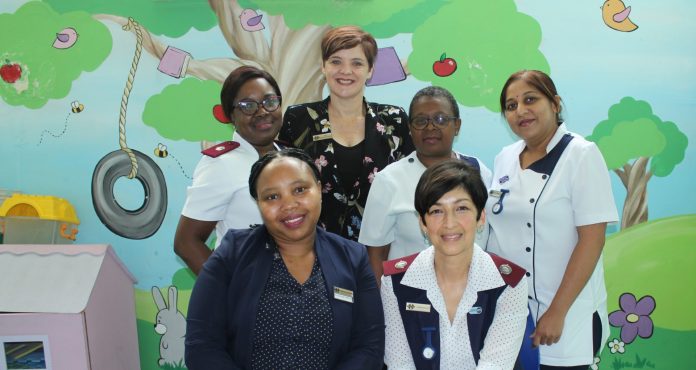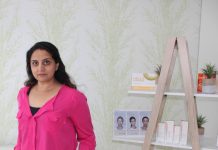Know the signs and save the time that can save a life
Looking at Zafar Mahomed, you see a healthy 20-year-old seizing the day – studying pharmacy, enjoying an active lifestyle and making a home with the love of his life. What you would’nt know is that he spent the early years of his childhood fighting cancer.
Like so many other children, Zafar’s cancer journey began with an incorrect diagnosis. At the age of just 20 months his previously sunny disposition changed. He developed a permanent limp and had lingering flu-like symptoms. Naturally concerned, his parents took him to their general practitioner.

Zafar’s mother, Shenaaz Mahomed, recalls that their doctor tried numerous medications to treat the flu symptoms and applied a cast to the painful leg, believing that Zafar had a benign condition that needed correcting.
“The doctor felt that we were being too soft on Zafar by not forcing him to walk. Six miserable weeks later his health had deteriorated and he had grown very pale. At this point the doctor ordered blood tests and when the results came back, our lives changed in an instant. I remember grabbing my handbag and rushing out of the pharmacy that my husband and I had just bought, with plans to start a family business. I did not set foot back through those doors for the next two years,” she says.
Following the blood test results, Zafar was immediately taken to see Dr Monica Vaithilingum, a paediatric haematologist practising at Netcare Parklands Hospital. “Zafar had leukaemia, a common type of blood cancer that develops in the bone marrow. I was shocked that his condition had not been identified earlier at primary care level. Since Zafar’s first visit to the GP, his health had deteriorated significantly. We began treatment almost immediately – he was just 22 months old at the time,” she says.

Dr Vaithilingum notes that more than 60 per cent of patients in the developing world either do not have access to appropriate healthcare or are not diagnosed timeously. “This illustrates the need for greater awareness around the disease, which people tend not to associate with children. However, approximately 400 000 new cases of cancer diagnosed annually worldwide are from birth to 19 years of age.
“Most childhood cancers can have a good outcome provided they are diagnosed early and treated appropriately. This is especially true of the most common type of cancer, acute leukaemia, which can be cured in up to 85 per cent of children. It is therefore imperative that there is greater awareness of this condition among parents, teachers and primary healthcare professionals,” she asserts.
In the case of Zafar, precious time had been lost and his immune system had become so weak that he was more susceptible to infections. This made it necessary to pause treatment at times to allow his blood counts to improve. All told, it took three years to complete treatment and two years thereafter, Zafar was finally declared cancer free.
“I am one of Dr Vaithilingum’s longest standing patients and though I am now an adult, I still go to her every year for my annual check up, which all survivors of childhood cancer must have,” says Zafar. “I feel so fortunate to have had the care that I did. It is thanks to this that I am here today, able to pursue my passion in the medical field. I am also lucky to have found the person I want to spend the rest of my life with and we were recently married.
“It is tragic that so many others’ lives are cut short – there was another child at my prep school with cancer and he did not survive. The more people know about the disease and what to look out for, the greater the chances that other kids will have the opportunity to grow up and experience life and its many meaningful milestones.”

Looking back on his time in treatment, Zafar says that he did not know any different and the treatment was simply part of his daily routine – he found it odd when people would treat him more carefully than others and the memories he has of that time are happy ones of family visits in the hospital.
“I felt like a small time celebrity – I would walk into the ward and everyone would greet me by name. I know that for my parents and my sister, who was just four at the time, it was so much harder. But here I am – alive, well and living my best life. I hope that my story can be a light at the end of the tunnel for others out there who are still fighting the good fight,” says Zafar.
According to Mrs Mahomed, Dr Vaithilingum took charge of every aspect of Zafar’s treatment, helping to get the family through those darkest of hours with input from a multidisciplinary team that made sure every aspect of Zafar’s care was attended to, from his medical needs to emotional support for the family.
“Dr Vaithilingum has a brilliant system where she pairs you with a family who is slightly ahead of you in treatment, and who has a similar cultural background, so that you have someone you can relate to and witness the progress that your child will hopefully soon make. This is helpful from a family perspective too, as the focus tends to be on the sick child and the parent who is dedicated to their care, while the others in the family are often neglected at a time when they too need as much support as they can get,” she says.
Dr Vaithilingum echoes this sentiment and points out that when you are treating a childhood cancer patient you are treating their family as well, as everyone needs to feel supported through the process.
“Even after a child has been declared cancer free, the journey continues with check ups that must not be missed to detect any long term complications while their body is still developing, and thereafter annual check ups must continue into adulthood. The chances that the cancer will come back are very low, but it is best to be cautious and proactive.
“Once you are aware of a problem, you can do something about it and that is really the main message here – by familiarising yourself with the signs of childhood cancer you can act promptly, which can save a life,” says Dr Vaithilingum.
Netcare Parklands Hospital general manager Thea Janse van Rensburg, concluded by saying that in addition to paediatric haematology services, the hospital offers a wide range of radiation treatments, as well as chemotherapy, provided by multidisciplinary teams who work closely together to develop an individual treatment plan for each patient.
Details: www.netcare.co.za or contact the Netcare customer service centre either by email at [email protected] or phone 0860 NETCARE (0860 638 2273

Signs of childhood cancer
Dr Vaithilingum explains that early warning signs of childhood cancer can be non-specific but that some of the more common signs to look out for are:
- Persistent unexplained fevers, unexplained loss of weight and lethargy
- Refusal to walk, bone pain, backache or a limp
- A pale appearance, sudden bruising or tiny spots of bleeding under the skin appearing as a flat purple, red or brown dot
- A change in behaviour and stopping normal activities – no longer running and playing
- Lumps and bumps anywhere on the body, enlarged lymph glands in the neck, groin or armpits, lumps on the head, bones or in the abdomen – these lumps are often noticed at bath time
- Sudden falls or disturbances in balance, headaches and persistent early morning vomiting
- The onset of a squint or changes in vision
“Many parents do not want to entertain the idea that their child may be seriously ill and hope that whatever it is will go away but time really is of the essence and it is better to seek care quickly, if only to rule out the presence of a life threatening illness. Even if a lump or tumour is not cancerous, it can still impact a child’s health and development so it is crucial to seek medical attention,” says Dr Vaithilingum.
“Some parents fear that they carry cancer in their genes that was then passed on to their child but only a very small percentage of cancers have a genetic or inherited factor. Cancer is not contagious either and cannot be transmitted from one sibling to another, though a child undergoing treatment may need to be isolated some of the time to prevent them from contracting life threatening infections from other people.”






